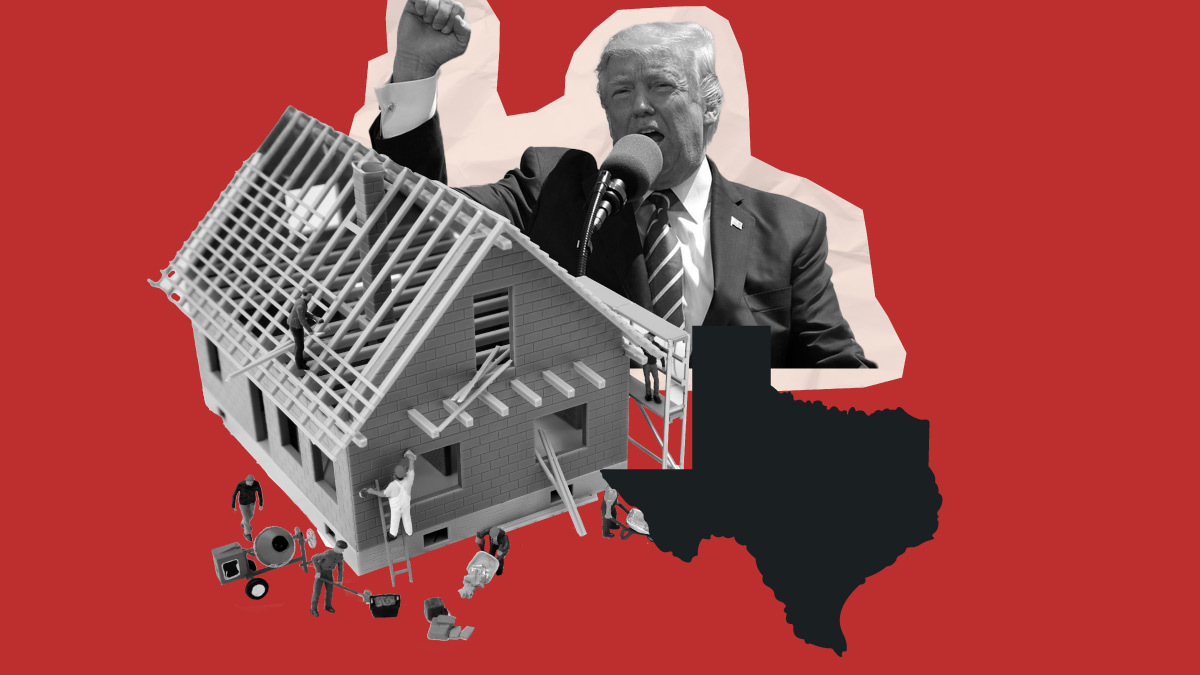President-elect Donald Trump’s plan to deport millions of undocumented immigrants could threaten one of the few bright spots in housing over the last few years: new home construction. Mass deportations would hit homebuilders and others in the construction sector with labor shortages, as a recent Redfin report found that immigrants make up about 30% of the construction labor force, with nearly half undocumented.
Gary Acosta, co-founder and CEO of the National Association of Hispanic Real Estate Professionals (NAHREP) sees difficulties ahead.
“It is going to have a negative effect, and perhaps a devastating effect, on construction labor forces in markets all over the United States,” Acosta said. “The construction industry has been dependent on immigrant labor for a long time, and that is well documented. They’re talking about coming to work sites and making sweeps in those markets. We know that that’s going to affect the workforce of people who are on the margin, maybe even in the process of getting their status officially.”
With rising mortgage rates, new home sales have outpaced sales of existing homes because builders have been able to buy down rates to entice buyers — an important factor in a housing market that is increasingly unaffordable. A sizable change in the labor force could upend that advantage.
Acosta said that the fear of mass deportations will make it difficult for construction companies to retain labor and hire new labor when new jobs become available. And Acosta says it doesn’t stop at the housing and construction industries.
“It is going to be the restaurant industry, the hospitality industry…I think the unfortunate part is that immigration has been framed as a social policy issue and in a very emotional way, with people talking about crime and murders and all these supposed things that immigration has created, which I think most of it is false in my opinion,” he shared. “People aren’t looking at it as an economic issue. They’re looking at it as a social policy issue. And if they look at it from a purely economic standpoint, I think their opinions would be different than what they are.”
Acosta says that he’s looked at the issue from a mathematical perspective — “Math has no opinion,” he quips. In the context of low housing inventory and already low unemployment, mass deportations will make things worse.
“It’ll take years, if not decades, to retrain our workforce for these [job] gaps. There are roughly 11 million open unfilled jobs in the United States right now, and the only way those jobs are going to get filled is through smart immigration. It’s not going to happen through new births, it’s not going to happen because people are just sitting on the sidelines. We are in a deficit in terms of workforce, and exacerbating this deficit is not the right solution,” he said.
Stephen Kim, senior managing director and head of the Housing Research Team at investment firm Evercore ISI, speaks to homebuilders regularly and says there’s “no doubt in anyone’s mind that this has the potential to be a significant factor in housing production” throughout 2025.
Kim added that although at times, contractors have to ensure that everyone on their team is a documented citizen, nobody that he’s spoken to is confident that there aren’t illegal immigrants finding their way onto those job sites. “Moreover, everyone that I’ve spoken to does believe that there is a meaningful number — not like 1 or 2%, but a meaningful number —of the workers in the industry who are undocumented. Maybe they’re not working on their homes, but they’re out there and they’re working on something.”
Kim says that at the same time, large-scale deportations won’t have much of an impact on housing demand. “Immigrants tend to live in large households, and it’s the household that occupies the housing stock…I don’t want to sound too callous here, but if you were to have a household of seven people and two of them got deported, you would still have five people who need to live somewhere,” he said.
But, Kim acknowledged, everything is contingent on what actually happens once Trump is in office, which means no builders that he’s spoken to have concrete plans to pull back from their current construction jobs or be more cautious.
“If you were to see the authorities go to like a construction or homebuilding job site and actually round up immigrants, I believe the word would spread pretty quickly, and you would see a lot of workers be very careful about showing up for work the next day,” Kim said. “I don’t think that you’re going to find that people will just net and just quit and never come back. I think that they need to work, but they’re going to be really careful…there [might] be a period of time when you won’t have them there…nevertheless, it will create delays.”
Mass deportations would hit housing in some states harder than others. A recent NPR article noted that Texas — a home-building hot spot — had more than half a million immigrants working in the construction industry in 2022 and that nearly 60% of that workforce was undocumented, double the national number. Ironically, Texas state officials have already pledged 1,400 acres of state land to house a new deportation facility if Trump wants it.

